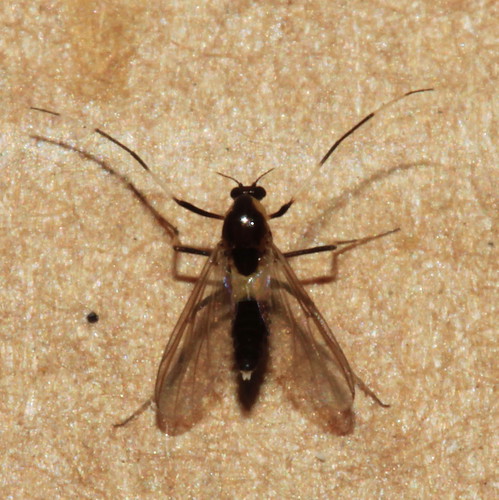Another Good post by Gordon Jackson demonstrating Autumnal Finds still yet around
Post by Gordon Jackson
On Sunday 12 Oct., there was a Feathered Thorn moth on our door. The next day, it had settled on the middle of the door step. I moved it to the Rockfoil in a jam jar for safety. It put it's antenna up for me, which I was pleased about, never having seen them before. They are very atractive but I wasn't able to take a photo.
Both sexes have a slightly hooked wing tip on the forewing and a slightly scalloped outer edge. They often have a unique whiteish spot near the tip, which is digagnostic.The cross lines maybe broken or incomplete but are usually conspicuous. Male comes to light, female less so.
Common and well distributed, but only locally through Scotland.
Flight season: Mid Sept. - early Dec.
Larvae food plant: A wide range of broodleaved trees.
Feathered Thorn (Colotois pennaria)
Also by the door was a Crane Fly, I'm not sure which one this is.
Crane Fly (TBC)
On the opposite wall was a Vine Weevil. We had an infestation of the grubs in our heuchera plants this year, we almost lost them, but discovered the cause in time. The grubs eat the roots until the plant dies. We bought a systemic Vine Weevil poison, which seemes to have done the job.
Most active: Adult weevils: spring to late summer; grubs: summer to spring.
Vine Weevil (
Otiorhynchus sulcatus)
There was a Green Lacewing on the door. I've always liked the look of this insect, but it was shy and flew off when I got my camera near it, which was a shame.
+++++++++
It was a sunny morning, so I took my new camera down Robber Dodge wood in Stainland. The new camera is a Lumix G5 this time, I wasn't happy with the Lumix GF5 for macro work, it didn't have a veiwfinder, for one thing, which was a big problem. The G5 is head and shoulders above the GF5. When both cameras came out, the G5 was several hundred pounds more than the GF. It is aimed at the more dedicated, serious photographer and has a much more intuitive menu system. The controls are (to me) more like a 35 mm camera and the grip is substantially bigger, making it easy to hold. So far I'm very pleased with it.
The first thing drawing my attention was a lichen. It was growing on a dry-stone wall. I'm fairly certain it is Parmelia saxatilis. Parmelia sulcata is very similar, but much more rare, and often has little lobules on its lobes. The upper surface of the lobes of Parmelia saxatilis is covered with a network of white lines, clearly visible with a lens. Little stubby projections (isidia) form on the lines, making the surface look rough. This species was used to produce a purple-brown dye in the past.
Lichen - Parmelia saxatilis
Robber Dodge is in the main, a beech wood, with a small mix of things like oak, sycamore, dog rose, elder, a few firs, blackberry, nettle etc. I'd just taken a shot of a few beach leaves and was walking away, when a tiny insect caught my eye. Ingoring the antennae and wings, the body was about 2-3 mm long. I took a shot of it and it's quite pretty. I've included the shot of the leaves I saw it on, for scale. The insect above is on the middle leaf, right hand side and low down. I have no idea what it maybe, if someome knows, please post the info, thanks.
Insect on a beech leaf
Sapling sycamore aphid (Drepanosiphum acerinu)
( Beech leaves with above insect on for scale)
Next is the so-called Artists Bracket fungi, because you can draw on the white part of it. This white part soon turns dark red-brown. It's a very widly distributed polypore bracket. It is 12–16 inches across, hard, woody-textured, and inedible. It's a common cause of decay and death of beech, poplar and several other trees. The midge, Agathomyia wankowiczii (Platypezidae) lays its eggs on the fruiting body of the fungus, forming galls. If you cut the fungi in half, you can count the layers to find out how old it is, in the same way you do with trees. Each layer is equal to one year.
Artists Bracket Fungi (Ganoderma applanatum)
The Common Dock (Rumex obtusifolius) caught my eye, there was a small clump of it which had been badly eaten by something. It's nice to know that things like moth larvae etc., don't just eat our garden plants. There were leaves which had been eaten so that only the leaf skeleton and outside edges were left but I wans't able to get a good photo of them. This will give you the idea though.
Common Dock (Rumex obtusifolius)
It has been many years since I was able to get as far into Robber Dodge wood as I did that day. Last time I was there, the stream about half a mile above where I was sat on Sunday, had large clumps of King Cup, or Marsh Marigold - (Caltha palustris) growing in it. The plant has spread down-river at least as far as the stone bridge I was sat on. It has lovely, bright yellow, buttercup-like flowers, and is part of the Ranunculaceae family. It's thought to be one of the most ancient native plants, surviving the glaciations and flourishing after the last retreat of the ice. It can be bought from garden centers and plant suppliers. It prefers partial shade, will grow in ponds, flowering time is March to April and it is slow growing.
NOTE: All parts of the plant are poisonous and can be irritant. It can cause skin rashes and dermatitis when handled excessively. It is also known to kill cows sometimes and will grow on cow manure.
King Cup or Marsh Marigold - (Caltha palustris)




.jpg)








.jpg)









.jpg)















